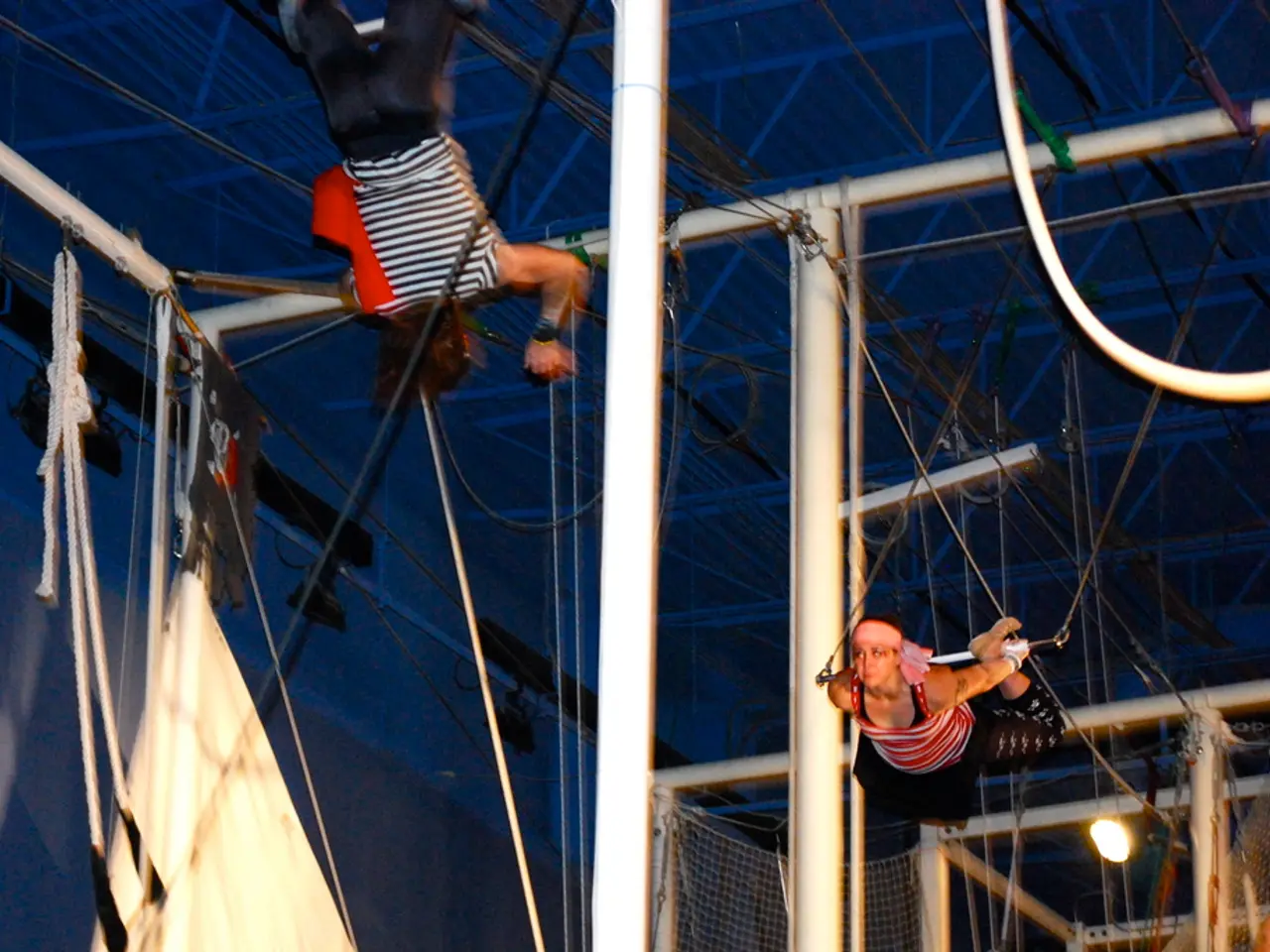Lifting Via Valsalva Maneuver: Guidelines, Advantages, and Potential Perils
The Valsalva Maneuver, a breathing exercise named after the 17th-century Italian anatomist Antonio Valsalva, has found its place in weightlifting and beyond. This technique involves holding air in the lungs by closing the glottis, a part of the larynx that allows air to go in and out of the windpipe.
The Valsalva Maneuver is divided into four phases:
- During Phase 1, by breathing out against a closed glottis and inflating the belly and chest, blood pressure is boosted.
- In Phase 2, the heart pumps less blood as the air is kept trapped.
- Phase 3 increases heart rate at the end when air is released.
- Phase 4 involves a quick return of blood to the heart as the body begins to rest, which can raise blood pressure before returning to normal.
While the Valsalva Maneuver can help with core stability, keeping the spine aligned during a workout, and preventing workout-related injury, it's important to exercise caution. Symptoms like pain, faintness, weakness, or shortness of breath should prompt immediate cessation of the maneuver. People with heart conditions should be particularly careful, as the maneuver temporarily increases heart rate and blood pressure, making it potentially risky.
Similarly, those with eye conditions such as retina damage should avoid using the Valsalva Maneuver as it can put pressure on the eyes. It's always recommended to consult a healthcare provider or certified personal trainer before incorporating the Valsalva Maneuver into a regular lifting routine, even for those without heart or eye conditions.
Beyond weight lifting, the Valsalva Maneuver can also be used for medical purposes. For instance, it can help diagnose certain heart disorders and treat clogged ears. Practicing breathing before working out can help reduce the risk of injury, and understanding the Valsalva Maneuver is a valuable addition to any fitness enthusiast's toolkit.
Remember, the air is held in at the glottis, not the throat or mouth. Always breathe in deeply before starting a lift, close the glottis, exhale against it, and repeat the process during each repetition. With practice, you can harness the power of the Valsalva Maneuver to enhance your workouts and stay safe while pushing your limits.





